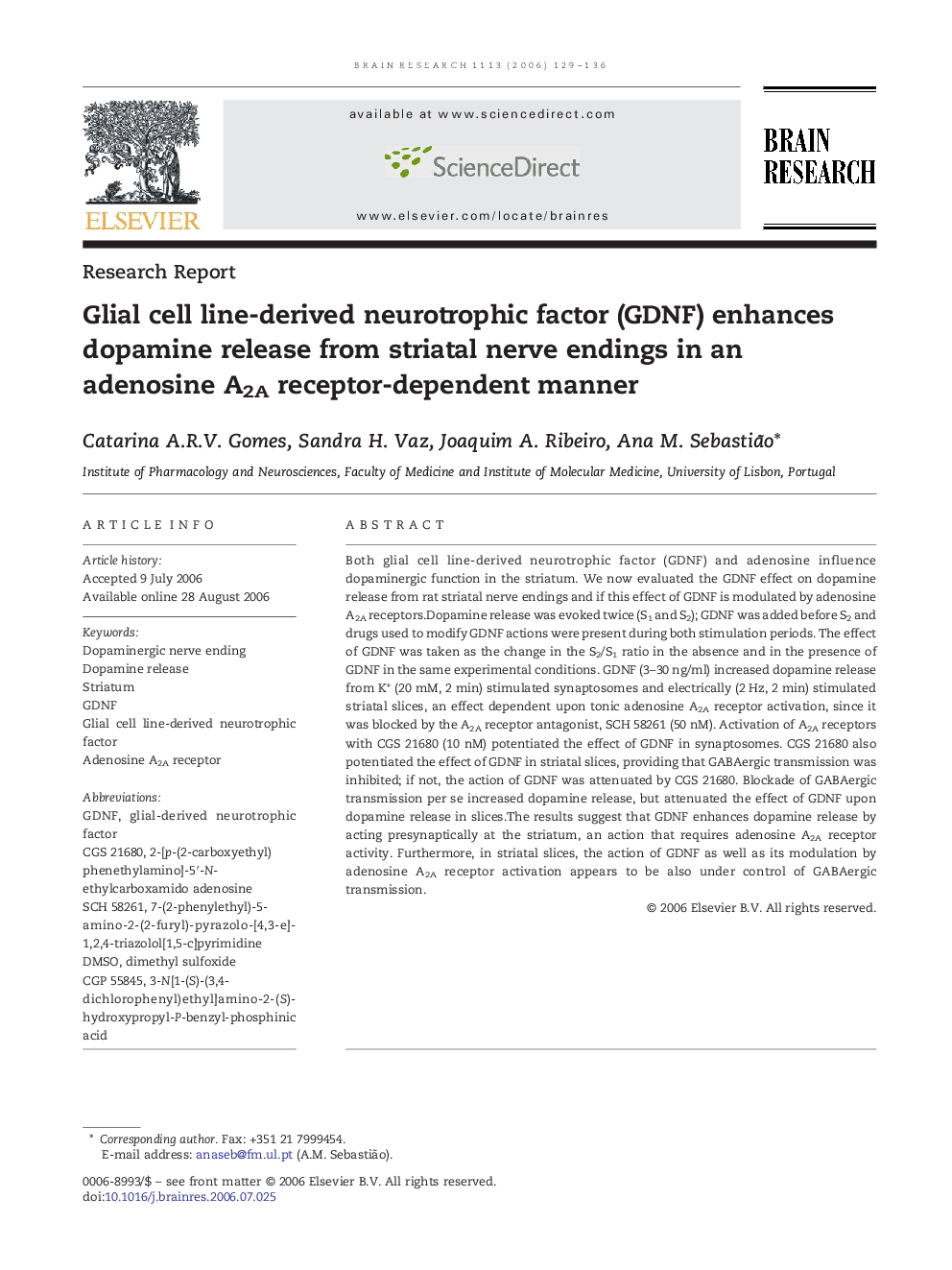| Article ID | Journal | Published Year | Pages | File Type |
|---|---|---|---|---|
| 4332200 | Brain Research | 2006 | 8 Pages |
Both glial cell line-derived neurotrophic factor (GDNF) and adenosine influence dopaminergic function in the striatum. We now evaluated the GDNF effect on dopamine release from rat striatal nerve endings and if this effect of GDNF is modulated by adenosine A2A receptors.Dopamine release was evoked twice (S1 and S2); GDNF was added before S2 and drugs used to modify GDNF actions were present during both stimulation periods. The effect of GDNF was taken as the change in the S2/S1 ratio in the absence and in the presence of GDNF in the same experimental conditions. GDNF (3–30 ng/ml) increased dopamine release from K+ (20 mM, 2 min) stimulated synaptosomes and electrically (2 Hz, 2 min) stimulated striatal slices, an effect dependent upon tonic adenosine A2A receptor activation, since it was blocked by the A2A receptor antagonist, SCH 58261 (50 nM). Activation of A2A receptors with CGS 21680 (10 nM) potentiated the effect of GDNF in synaptosomes. CGS 21680 also potentiated the effect of GDNF in striatal slices, providing that GABAergic transmission was inhibited; if not, the action of GDNF was attenuated by CGS 21680. Blockade of GABAergic transmission per se increased dopamine release, but attenuated the effect of GDNF upon dopamine release in slices.The results suggest that GDNF enhances dopamine release by acting presynaptically at the striatum, an action that requires adenosine A2A receptor activity. Furthermore, in striatal slices, the action of GDNF as well as its modulation by adenosine A2A receptor activation appears to be also under control of GABAergic transmission.
